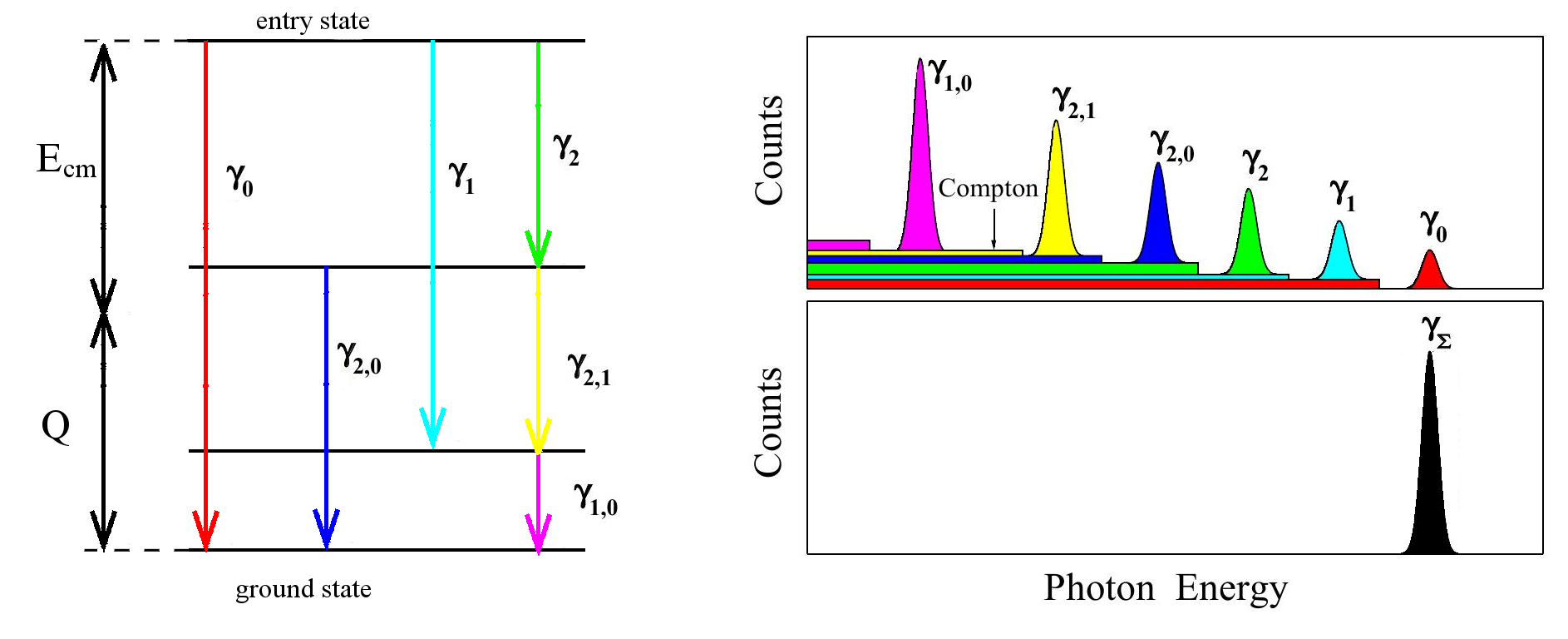Summing technique
If, for example, during a AZ(p,γ)A+1Z+1 reaction a proton with a kinetic energy Ecm in the center of mass system is captured to an excited state of the target nuclei, the created system will deexcite emitting a gamma radiation. The emitted gamma cascade might be complicated,especially for high-multiplicity transition. If the spectrum is registered with a small gamma detector, various transitions are registered as separate peaks and the resulting spectrum might be complex and difficult to analyze. A sample cascade and corresponding small-detector spectrum (upper-right panel) are shown in the figure below.
 Summing technique - the energy of the sum peak γΣ is equal to the sum of the reaction Q-value and projectile CM energy (Ecm).
Summing technique - the energy of the sum peak γΣ is equal to the sum of the reaction Q-value and projectile CM energy (Ecm).
When a large-volume detector surrounding the target and covering almost 4π solid angle is used (such as SuN), the summing technique may be appied. In this case all the emitted gammas are fully absorbed within the detector and the photomultipliers are not able to distinguish photons emitted during a time interval shorter than a decay time of a crystal (which is typically greater than 250 ns). In this case gamma rays emitted during one cascade cannot be distinguished by the detector and are registered as one photon of the energy equal to the energy difference between the entry and ground states. Thus, the spectrum comprises of only one peak, at the energy EΣ=Q+Ecm.
Additionaly, the energy of the resulting sum is much higher than any other transition energy emitted during the collision, thus the sum peak will be registered in the background free region of the gamma spectrum.
This technique was for the first time used for cross section measurement of 89Y(p,γ)90Zr reaction [Ts2004] and later succesfully employed to study various reactions relevant to the p-process [Sp2007]

